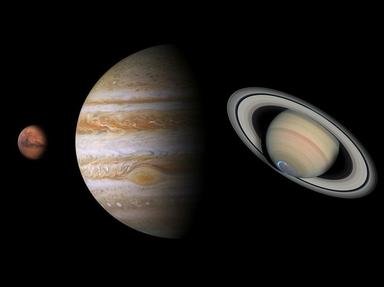Quiz Answer Key and Fun Facts
1. Vesta is an object fiercely debated as to what it should be called. Some qualities suggest it is a mere asteroid, while other traits suggest it to be a dwarf planet. What is one distinguishing planetary characteristic held by Vesta?
(Note that some of these may be planetary features not held by Vesta, and some may not be planetary features at all)
2. Going back to Vesta's discovery in 1807, Vesta was only the fourth object in the asteroid belt to be seen. Who is its credited discoverer?
3. With a potential magnitude of 5.1, Vesta is the second brightest object in the asteroid belt as observed from Earth.
4. Within the last billion years, Vesta was hit by another object and, as a result, lost around 1% of its mass. However, the impact created which very tall mountain?
5. Like many astronomical bodies, Vesta has an official symbol. What is it?
6. Vesta is the second most massive object in the asteroid belt, having about 9% of the mass of the entire belt. But it is decidedly not the second largest. Other than Ceres, which asteroid belt object is larger than Vesta?
7. Though lesser known than the Rheasilvia crater, Veneneia is even older, at an approximated two billion years old. Within Veneneia are several troughs, parallel to what other geological feature?
8. What relationship to Vesta does the asteroid Kollaa have?
9. Vesta was the first body in the asteroid belt to have its mass directly determined when which asteroid passed within 0.04 AU of it?
10. Another distinguishing planetary feature of Vesta is that it has a differentiated interior.
Source: Author
jonthomas
This quiz was reviewed by FunTrivia editor
rossian before going online.
Any errors found in FunTrivia content are routinely corrected through our feedback system.

